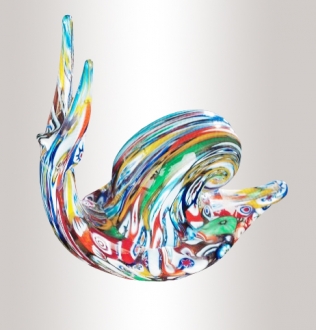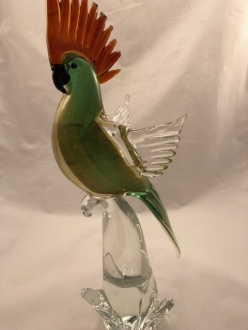Murano Glass Gifts
- All Shops
- Murano Glass Gifts
- Amazing Music Boxes
- Beer Steins
- Limoges Factory
- Gift Guide
- Walking Canes
- Gifts
Antonio Salviati – The Man Who Restored Murano Glass Glory
Murano Island is a beautiful and more or less isolated island in the Adriatic Sea and is a part of Venice. Venice was once known for its glass blowing industry. The old Venice comprising wooden buildings was not too suited for the extremely high temperature of the glass furnaces. This fact forced the authorities to find another place for their ancient art. The island of Murano was sufficiently away from the main land and so it was selected. The furnaces and the artisans were shifted to the island in 1291.
The industry flourished well and soon Murano glass articles conquered the world. The 15th and 16th century were said to be the golden era of Murano glass industry. From the 17th century it began to lose its glory mainly because of the competition from glass industry in other countries like China.
In the 18th century there came a savior for this declining industry in the person of Antonio Salviati, a lawyer by profession. It so happened that he was involved in the restoration of the mosaic in St. Mark’s Cathedral in Venice. This got him interested in the glass art. So in 1959 he founded a business in the same line with a partner, Lorenzo Radi. Soon the firm gathered international fame and it was commissioned for working the mosaic of none less than Westminster Abbey. This gave Salviati great confidence and decided to extend his interest to other glass articles.
In 1866 he founded a glass blowing company called Vetreria Salviati & Co. This was a new dawn as far as the Murano glass industry was concerned. The traditional art of Murano was revived under the craftsmanship of the many artisans Salviati employed in his firm. His team included the world renowned painters Dino Martens and Mario De Luigi at various times. They found a way to mass produce the Murano art glass. The beautifully colored Murano art glass articles which could only be afforded by the affluent class could be now attainable to everybody.
This popularized the art and once again Murano glass articles invaded the world. The furnace continued to be in the business till 1999 under various ownership. In 1999 the ownership of the business was transferred to a French owner.
Salviati Glass & Mosaics
Antonio Salviati started his glass jobs with mosaic works of various churches and cathedrals. Then the glass generally fascinated him and he started experimenting with blown glass. Thus, when he established his company Vetreria Salviati, it had two distinct sections – one for mosaics and the other for art glass articles. Both won tremendous popularity.
The specialty of Salviati glass was its bright colors and unconventional textures. While following the traditional Murano techniques, artists like Dino Martens resorted to modern designs. His vase collection made of pale yellow glass earned unprecedented recognition in the 1930 Venice Biennale.
Mario De Luigi also worked closely with the antique techniques used by the traditional artists, but his technique included a kind of molten glass mosaic, which was an innovative technique at that time. However, the production stopped soon because of the laborious processes involved and now they are very rare and valuable collectors’ items.
Salviati enamel glass mosaics used in cathedrals were highly esteemed at that time because they were often used for biblical narrations. Many churches and cathedrals of the world own these reputed mosaic works.
Antonio Salviati died in 1890 and in 1898 the Camerino family took over Salviati furnace and retained the ownership till 1980. After the war the furnace exhibited its products in every biennale. The Salviati designs are even now highly appreciated all over the world and the vases and chandeliers of Salviati are in a class of their own.
by Marina Chernyak



